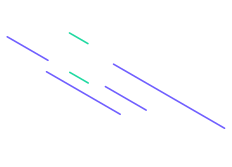






Name
Chamberlain University
NR-501: Theoretical Basis for Advanced Nursing Practice
Prof. Name
Date
Cengiz, B., Bahar, Z., & Canda, A. E. (2020). The Effects of Patient Care Results of Applied Nursing Intervention to Individuals With Stoma According to the Health Belief Model. Cancer Nursing, 43(2), E87–E96.
This study investigated the effectiveness of nursing interventions guided by the Health Belief Model (HBM) in patients who had undergone stoma surgery within the past three months. Patients with a newly formed stoma often experience significant challenges in adapting to lifestyle changes. The purpose of the research was to evaluate whether home-based nursing interventions, designed according to HBM principles, improved postoperative care outcomes.
The design followed a semi-experimental control group format with pre-test and post-test measures. A total of 61 patients participated, with 30 assigned to the intervention group and 31 to the control group. Findings suggested that continuous consultation and care aligned with HBM principles were essential in improving patients’ adjustment to life with a stoma.
The HBM helped patients identify perceived barriers and facilitated the adoption of healthy practices by reframing their attitudes toward stoma care. As barriers decreased, patients reported greater ease in managing their stomas, leading to improved health outcomes. The model also reinforced patients’ perception of benefits, which promoted motivation, self-care, and adaptation to new health behaviors.
| Element | Details |
|---|---|
| Design/Method | Semi-experimental with pre-test, post-test, and control group |
| Sample/Setting | 61 patients (30 intervention, 31 control) post-stoma surgery |
| Framework Used | Health Belief Model (HBM) |
| Key Variables | Patient adaptation, perceived barriers, postoperative self-care |
| Findings | HBM interventions improved stoma care adaptation and reduced perceived barriers |
As a future nurse practitioner, I recognize the importance of providing comprehensive discharge education. While not limited to patients with stomas, this model demonstrates the value of acknowledging patients’ perceived barriers when teaching about new diagnoses or conditions. Educating patients on potential challenges, while offering clear management strategies, fosters better collaboration between nurses and patients. Using the HBM, I can guide patients toward positive health outcomes by addressing both obstacles and benefits, resulting in improved long-term care.
Irvine, S., Williams, B., Özmen, M., & McKenna, L. (2019). Exploration of self-regulatory behaviours of undergraduate nursing students learning to teach: A social cognitive perspective. Nurse Education in Practice, 41.
The Social Cognitive Theory (SCT) emphasizes self-regulation and active participation in learning. This study explored how undergraduate nursing students used self-regulated learning strategies while engaging in peer-teaching activities during their clinical education.
Through a qualitative design involving questionnaires and interviews, the study revealed that structured peer-teaching enhanced self-confidence and supported self-regulatory learning behaviors. SCT highlights how learners influence their own motivation, cognition, and environment to shape performance outcomes.
| Element | Details |
|---|---|
| Design/Method | Qualitative study using questionnaires and interviews |
| Sample/Setting | Undergraduate nursing students in clinical peer-teaching settings |
| Framework Used | Social Cognitive Theory (self-regulation focus) |
| Key Variables | Self-efficacy, motivation, peer-learning, academic confidence |
| Findings | Peer-learning improved confidence and supported self-regulated learning |
As a future nurse practitioner, incorporating self-regulated learning strategies is vital. Actively engaging in peer-learning environments during practicum placements could strengthen my ability to regulate motivation, monitor progress, and apply clinical knowledge. SCT also provides a foundation for future teaching roles, highlighting how observational learning and self-efficacy contribute to professional growth.
Looman, W. S. (2019). Teaching systems thinking for advanced family nursing practice: A theory-based tool. Journal of Family Nursing, 26(1), 5–14.
This article emphasizes the relevance of Family Systems Theory (FST) in advanced nursing practice. Using the Family Nursing Assessment and Intervention Map (FN-AIM), graduate nursing students developed system-based approaches to family care.
The FN-AIM tool encouraged students to create family-centered interventions that recognized both individual and family-level health concerns. Results demonstrated that students who applied the tool gained stronger system-thinking skills, enabling them to view families as interconnected systems rather than isolated individuals.
| Element | Details |
|---|---|
| Design/Method | Application of FN-AIM in graduate nursing education |
| Sample/Setting | 30 graduate nursing students |
| Framework Used | Family Systems Theory |
| Key Variables | Systems thinking, family interventions, clinical practice competence |
| Findings | Improved ability to view and treat families as interconnected systems |
For future practice, cultivating systems thinking skills is critical. By using FST, I can develop holistic interventions that consider family dynamics, communication, and emotional needs. This model ensures nursing care is not limited to individual patients but extends to the entire family unit, promoting long-term health and stability.
Cengiz, B., Bahar, Z., & Canda, A. E. (2020). The Effects of Patient Care Results of Applied Nursing Intervention to Individuals With Stoma According to the Health Belief Model. Cancer Nursing, 43(2), E87–E96. https://doi.org/10.1097/NCC.0000000000000692
Irvine, S., Williams, B., Özmen, M., & McKenna, L. (2019). Exploration of self-regulatory behaviours of undergraduate nursing students learning to teach: A social cognitive perspective. Nurse Education in Practice, 41, 102622. https://doi.org/10.1016/j.nepr.2019.102622
Looman, W. S. (2019). Teaching systems thinking for advanced family nursing practice: A theory-based tool. Journal of Family Nursing, 26(1), 5–14. https://doi.org/10.1177/1074840719893079